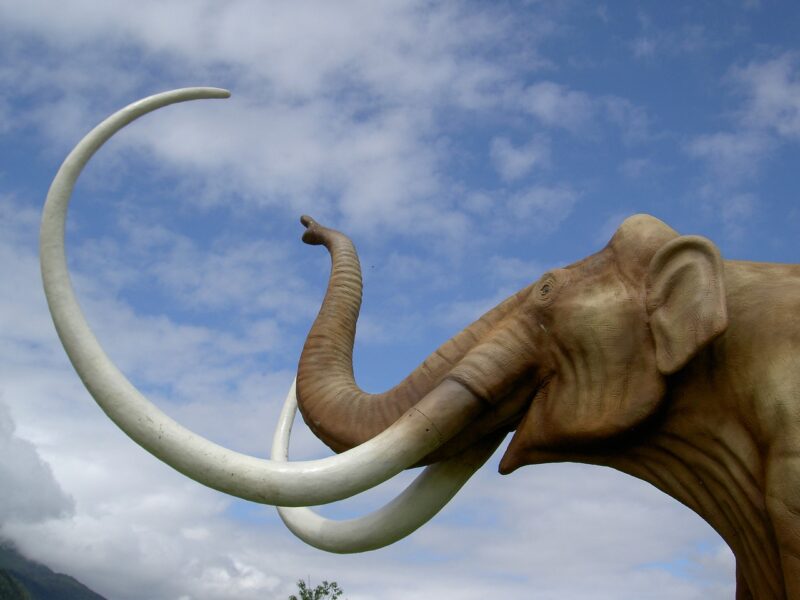The Most Iconic Prehistoric Animals of the Ice Age: A Journey Through Time
November 15, 2024

The Ice Age, spanning from about 2.4 million to 11,700 years ago, was a time of drastic climate change and fascinating evolutionary adaptations. During this era, prehistoric megafauna roamed the cold landscapes, leaving behind a rich fossil record that continues to captivate scientists and enthusiasts alike. This article will take you on a journey through time, exploring the most iconic prehistoric animals that graced our planet during the Ice Age, their habitats, physical characteristics, and the misconceptions surrounding them.
1. The Woolly Mammoth: The Icon of the Ice Age
The woolly mammoth is perhaps the most recognized symbol of the Ice Age. Standing up to 13 feet tall and weighing as much as 6 tons, these massive creatures were well-adapted to the cold, with long curved tusks and a thick coat of shaggy hair.
– Habitat: Woolly mammoths thrived in the tundras and grasslands of North America, Europe, and Asia.
– Diet: They were herbivores, primarily feeding on grasses, shrubs, and other vegetation.
– Social Structure: Evidence suggests they traveled in herds, providing protection against predators.
Despite being closely related to modern elephants, woolly mammoths went extinct around 4,000 years ago, primarily due to climate change and overhunting by early humans.
2. The Saber-Toothed Cat: Nature’s Fearsome Predator
Often depicted as ferocious hunters, saber-toothed cats (also known as saber-toothed tigers) are easily recognized by their elongated canine teeth that could measure over 7 inches in length.
– Habitat: These predators were versatile, found in various environments including forests, grasslands, and mountain regions across North America.
– Hunting Techniques: Unlike modern big cats, saber-toothed cats had a unique hunting style, relying on ambush tactics to take down larger prey, such as the mammoth and bison.
– Extinction Factors: As with many Ice Age species, shifts in climate and the decline of prey populations contributed to their extinction approximately 10,000 years ago.
3. The Giant Ground Sloth: A Slow Giant
Contrary to the small, slow-moving sloths we see today, giant ground sloths were massive creatures, with some species weighing up to 2,200 pounds and reaching lengths of up to 10 feet.
– Physical Features: They had long, curved claws and robust limbs, enabling them to reach and pull down branches to feed on leaves and fruits.
– Habitat: These sloths roamed the forests and grasslands of South America and North America.
– Extinction Causes: They disappeared around 10,000 years ago, likely due to changing climates and human hunting practices.
4. The Mastodon: The Forgotten Cousin of the Mammoth
While often mistaken for woolly mammoths due to their similar appearance, mastodons had a distinct body structure and different dental patterns suited for browsing rather than grazing.
– Physical Differences: Mastodons had shorter, more robust bodies and tusks that were more straight and less curved.
– Dietary Habits: Their teeth, with cone-shaped cusps, were perfect for chewing leaves, shrubs, and soft wood.
– Extinction Timeline: Mastodons went extinct around 11,000 years ago, likely due to a combination of climate change and human activity.
5. The Irish Elk: Majestic and Enormous
The Irish elk, known for its enormous antlers that spanned up to 12 feet, is an iconic example of Ice Age megafauna. They are not true elk but are related to the modern reindeer and moose.
– Size and Weight: Males could weigh over 1,500 pounds, making them one of the largest deer species ever to exist.
– Habitat: They inhabited forested and open areas across Europe and parts of Asia.
– Causes of Extinction: The decline in their habitat and food sources, combined with hunting by early humans, led to their extinction around 7,700 years ago.
6. The Woolly Rhinoceros: A Tragic Yet Fascinating Creature
The woolly rhinoceros was another iconic inhabitant of the Ice Age, characterized by its thick, fur-covered body and large, curved horns.
– Physical Features: These rhinos were equipped with heavy front horns for defense and to help forage for food beneath layers of snow and ice.
– Habitat: They roamed the cold, open tundra and grassland areas of Europe and Asia.
– Extinction Factors: The woolly rhinoceros faced extinction due to climate change and hunting by early human populations, disappearing around 10,000 years ago.
Conclusion: The End of an Era
The Ice Age was a remarkable period marked by extraordinary wildlife that evolved to adapt to extreme conditions. Each of these prehistoric animals played a significant role in their respective ecosystems. Their extinction not only marked the end of an era but also serves as a reminder of the impact of climate change and human activities on the planet. Understanding these majestic creatures allows us to appreciate the resilience and fragility of life on Earth.
As we look through the lens of time, it is essential to reflect on how the stories from the Ice Age continue to inform our understanding of evolution, ecology, and conservation efforts today. The legacy of these iconic prehistoric animals lives on, urging us to protect the biodiversity we have left in our ever-changing world.








